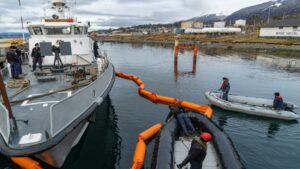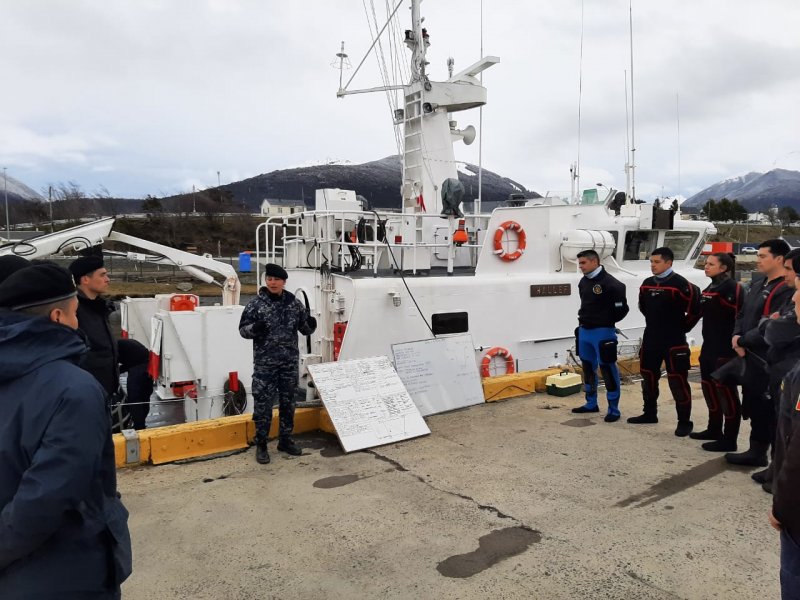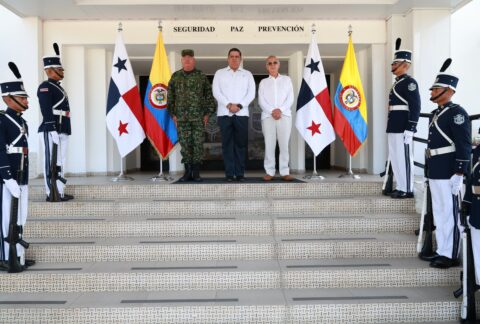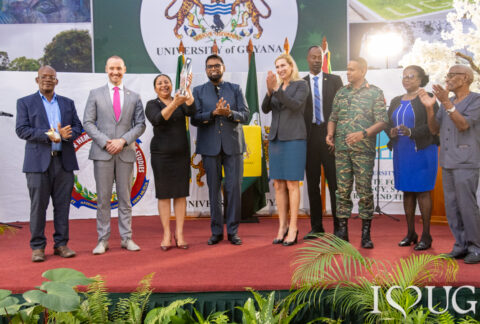The southernmost tip of the Americas was the scene of the 22nd edition of the combined naval exercise Viekaren, which brought together the Chilean and Argentine navies in Ushuaia, capital of the Argentine province of Tierra del Fuego, known as the end of the world.
“The proximity of Ushuaia and Puerto Williams [Chile], within an area of operations subjected to weather conditions of extreme cold sea and wind, call for mutual knowledge,” Chilean Navy Captain Cristian Yáñez, commander of the Beagle Naval District, told Diálogo on September 12. “In this isolated area, the synergy between the two navies contributes to increasing the safety of navigation and human life at sea.”
The mission of Viekaren XXII was to strengthen interoperability between the two forces, to train in combined response capabilities in the event of a maritime emergency, and to bolster the bonds of trust and communication between both nations. In this edition, the Chilean Navy led the planning and execution of the exercise carried out in late August.
Capt. Yáñez deployed as operational commander of Viekaren XXII. For its part the Argentine Navy was represented by Captain Ángel Vildoza, chief of Staff of the Southern Naval Area.

Viekaren (trust in Yaghan language, from the people of the same name who inhabited the territory that today is Tierra del Fuego), is part of the mutual confidence set out in the Peace and Friendship Treaty both countries signed in 1984. The annual exercise was halted for two years due to the restrictions imposed by the COVID-19 pandemic.
More than 150 troops from both countries participated in a variety of maritime search and rescue exercises, deployment of pollution barriers, day and night dives, underwater welding practices, towing maneuvers to different naval units, combined dives in a simulated scenario of a ship hull failure requiring inspection, in addition to the simulation of a search and rescue (SAR) mission.
“In fact, the final exercise required a rapid assessment of the situation in the early hours of the morning, due to a sudden and violent change in sea and wind conditions,” Cap. Yáñez told Diálogo. “This allowed us to validate that the exercise area was correctly selected, making it possible to fulfill the established objectives in an optimal way, even in conditions that tempered the spirit of the crews.”
In “Viekaren the crews of both navies put their professionalism to the test in the different types of exercises,” said Capt. Vildoza. “During the course of the days, the versatility of the units and interoperability between the Chilean and Argentine navies were demonstrated.
“We must stress the seriousness with which we carried out the series of exercises as part of Viekaren; the weather forced us to apply maximum flexibility in the planning and, despite this, all the exercises were executed in an optimal way,” Capt. Yáñez told Argentine news site Gaceta Marinera. “We consolidated the bonds of brotherhood with our neighboring country.”
After five days of intense operations, the exercise ended with a meeting between the navies of both countries held in Ushuaia to gather lessons learned and improvements to be taken into account for future editions of the exercise.
“The main lesson learned was the need to maintain permanent situational awareness with ample flexibility in planning, due to the particular weather conditions in the area of operations,” Capt. Yáñez said. “Another notable lesson learned was, that combined operations require mutual knowledge of each navy’s procedures and terminologies.”
“The challenge ahead is to continue to train in a combined manner, with a gradual increase in the level of complexity of the operations, to react correctly to a SAR case in the Beagle Channel area,” Capt. Vildoza concluded.









